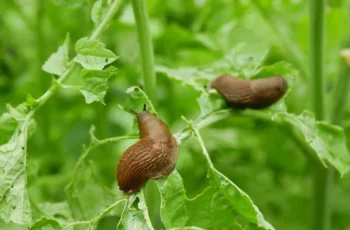Stink bugs, particularly the invasive brown marmorated stink bug, are a persistent challenge for homeowners, especially in the fall when they seek warmth indoors. These shield-shaped insects, originally from Asia, have become a widespread agricultural and household nuisance across North America. Feeding on fruits, vegetables, and ornamental plants, they cause significant damage to crops and gardens. Their most infamous trait, however, is the foul, cilantro-like odor they emit when threatened or crushed, making them difficult to eliminate without discomfort. Understanding their behavior and implementing a combination of prevention, natural deterrents, and targeted pest control measures is essential to keeping your home stink bug-free. This guide provides practical, actionable strategies to manage and prevent stink bug infestations effectively.

Understanding Stink Bug Behavior Stink bugs are driven indoors by dropping temperatures, typically in late summer and fall. They enter homes through small cracks, gaps, and openings, seeking shelter to overwinter. While they do not bite, sting, or pose significant health risks, their sheer numbers can be overwhelming, and their odor can linger if mishandled. Identifying how and where they gain access to your home is the first step in preventing an infestation. Regularly inspecting your property for vulnerabilities can save you from dealing with a larger problem later.
Preventing Stink Bugs from Entering Sealing entry points is critical to keeping stink bugs out. Inspect your home’s exterior for gaps around windows, doors, vents, utility lines, and siding. Use silicone caulk or weather stripping to seal these areas, creating a robust barrier. Pay special attention to areas where pipes or cables enter the home, as these are common entry points. Installing fine mesh screens over attic vents, chimneys, and crawl space openings adds another layer of protection. Ensure window screens are intact, repairing any tears or holes promptly. Regular maintenance of these barriers, especially before fall, significantly reduces the risk of invasion.
Natural Repellents for Stink Bugs Natural, non-toxic solutions can effectively deter stink bugs. A homemade spray made by mixing water with a few teaspoons of dish soap can be applied directly to stink bugs, causing them to suffocate. This solution is safe for indoor use and easy to prepare. Essential oils, such as peppermint, clove, or garlic, are also powerful repellents. Mix 10-15 drops of essential oil with water in a spray bottle and apply it along windowsills, doorframes, and other entry points. Reapply every few days for continued effectiveness. These methods are eco-friendly and safe for households with pets or children.
Outdoor Strategies to Deter Stink Bugs Managing stink bugs starts outside your home. Encourage natural predators like birds, spiders, and praying mantises by maintaining bird feeders or planting native flora that attracts beneficial insects. These predators help keep stink bug populations in check. Planting repellent vegetation, such as marigolds, chrysanthemums, or garlic, around entryways or in garden beds creates a natural deterrent, as stink bugs dislike their strong odors. Keeping your yard free of debris and overripe fruit also reduces attractants, making your property less appealing to these pests.
Effective Indoor Removal Techniques If stink bugs get inside, remove them carefully to avoid triggering their odor. Use a bagged vacuum cleaner to suck them up, then immediately seal and dispose of the bag outside to prevent odor release. Alternatively, place a soapy water-filled container beneath the bugs and gently knock them in to drown them. Sticky traps placed near windows, light fixtures, or suspected entry points are excellent for capturing stink bugs and monitoring infestation levels. Check traps regularly and replace them as needed to maintain their effectiveness.
Chemical Solutions for Severe Infestations For persistent or large-scale infestations, chemical controls may be necessary. Insecticides labeled specifically for stink bug control can be applied to exterior walls, window frames, and doorways. Always follow the manufacturer’s instructions to ensure safe and effective use, and avoid applying chemicals indoors unless explicitly recommended. If the problem persists, consider hiring a licensed pest control professional. They can assess the infestation, apply targeted treatments, and recommend long-term prevention strategies tailored to your home.
Long-Term Stink Bug Management Preventing future infestations requires ongoing vigilance. Keep your home clean by vacuuming regularly, reducing clutter, and wiping surfaces with vinegar or citrus-based cleaners, which repel stink bugs. Check for stowaways on clothing, bags, or outdoor furniture before bringing them indoors, as stink bugs can hitch a ride. In fall, minimize outdoor lighting near entrances, as it attracts these pests. Regularly inspect and maintain entry points, reapply deterrent sprays, and monitor for signs of reinfestation. Combining these efforts ensures your home remains a pest-free sanctuary.
Additional Tips for Stink Bug Control Act quickly if you spot even a few stink bugs, as they can signal a larger invasion. Use a handheld vacuum for small numbers to avoid crushing them. Consider installing door sweeps to close gaps under exterior doors. If you have fruit trees or a vegetable garden, harvest produce promptly to avoid attracting stink bugs. Educate household members about proper removal techniques to prevent accidental odor release. Staying proactive and consistent with these measures minimizes the likelihood of recurring problems.

Conclusion Dealing with stink bugs can be frustrating, but with the right approach, it’s entirely manageable. By understanding their habits, sealing entry points, using natural and chemical deterrents, and maintaining long-term prevention strategies, you can keep your home free of these odorous invaders. Whether you opt for DIY solutions or professional help, persistence and vigilance are key. With these comprehensive strategies, your living space will remain comfortable, pest-free, and odor-free year-round, allowing you to enjoy your home without the nuisance of stink bugs.

